한식 읽기 좋은 날
Traditional Korean Confectionery, A Heartfelt Masterpiece
Editor's Letter
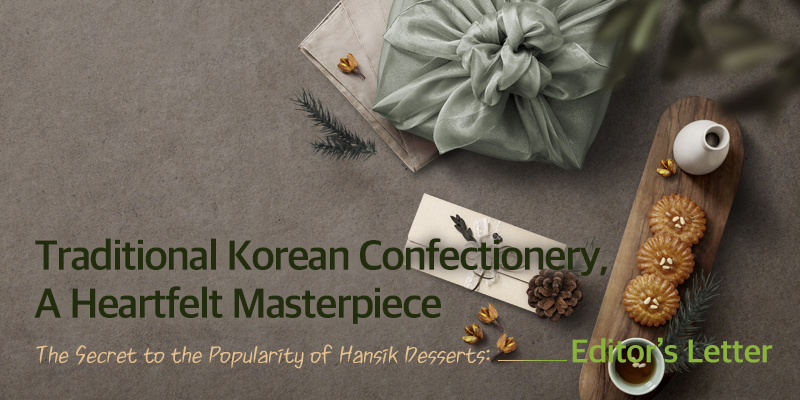
"Were you able to pre-order yakgwa at the shop?” Traditional Korean sweets, also known as 'hangwa,' which are usually enjoyed during the traditional holiday season, are creating a sensation in the dessert market. There is a fervent interest in and passion for traditional snacks, with people making open-runs (rushing to the store at opening time) to hangwa specialty dessert stores and engaging in 'hangwa ticketing' activities similar to ticketing for pop-star concerts. Recently, even a renowned international luxury brand prepared famous yakgwa sets for their Chuseok (Korean harvest festival) VIP gifts, once again demonstrating the popularity of these traditional delicacies.
It is no exaggeration to say that traditional snacks are at the center of the dessert trend today, so let’s explore and discover the charms of Hansik desserts that have enticed the younger generation.
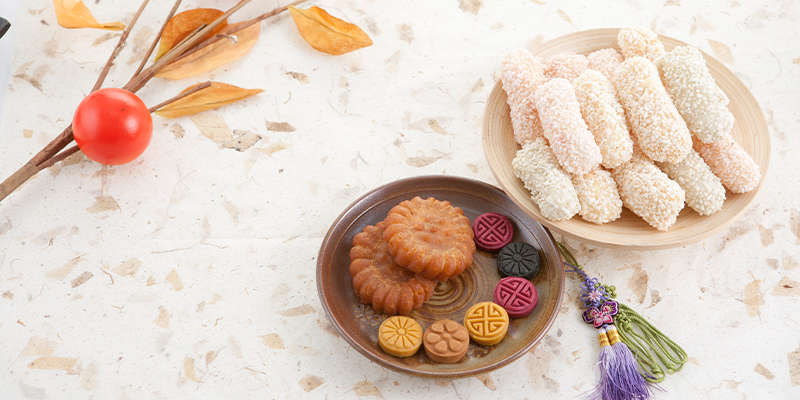
Traditional Korean Desserts Bloomed in the Goryeo Dynasty
Traditional snacks made in Korea were referred to as 'jogw,’ literally meaning ‘fake fruit’, as the snacks usually mimicked fruits. The realm of Korean desserts encompasses various delicacies, including rice cakes like ‘juak’ and ‘danja,’ traditional sweets like ‘hangwa,’ and refreshing or warm beverages called ‘eumcheongryu.’ While Western countries have the salon culture, Korea has its 'eumda' culture. During the Goryeo Dynasty, when Buddhism flourished, the culture of drinking tea became popular, and hangwa which was served alongside tea as accompaniments, significantly enhanced the occasion.
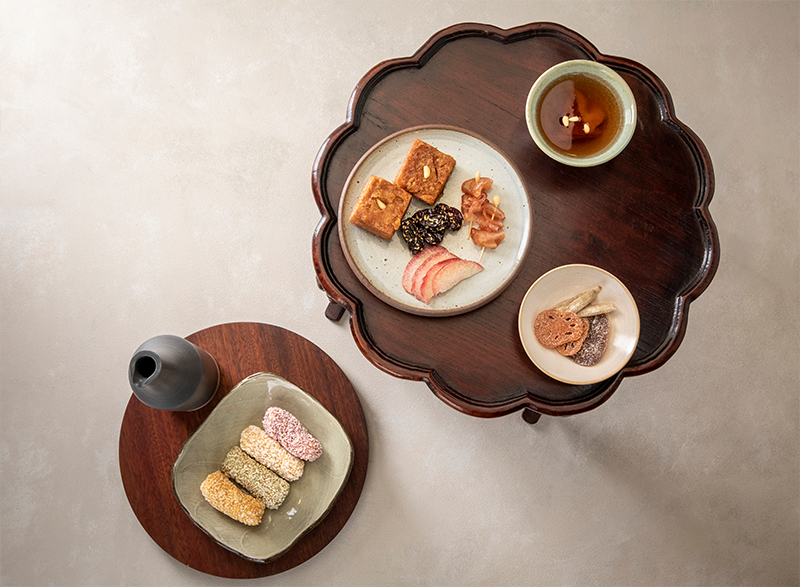
In particular, 'yumilgwa,' made by kneading grain flour and frying in oil, was often used in Buddhist rituals and enjoyed by the royal family. Its taste and reputation spread even to China. Historical records in the <Goryeosa> (history of Goryeo) note that during the rule of King Chungnyeol (1274-1308), yumilgwa served at the prince’s wedding banquet in the Chinese Yuan Dynasty received high acclaim for its exquisite taste as it melted smoothly in the mouth.
In the Joseon Dynasty, rice cakes and hangwa further developed, in particular centered around the palace and aristocratic circles. Recorded hangwa varieties alone reached a staggering 254 types. Yumilgwa and gangjeong eventually became widely popular among commoners and became essential items for festive occasions such as Lunar New Year, weddings, sixtieth birthday celebrations, and ancestral rites.

MZ Generation’s Attraction to Hansik Desserts
The recent popularity of traditional Korean desserts among the younger generation is actually a very natural phenomenon. With the consistent interest in healthy eating and the emerging trend of indulging in bite-size small luxuries, people naturally started to turn their eyes to Korean traditional snacks, made with care for special occasions paired with healthiness. Instead of using sugar that creates an overpowering taste of sweetness, Korean traditional snacks use honey and malt syrup to deliver the natural sweetness of the ingredients themselves, creating delicate and pleasant sweetness that is more delightful to the palate.

With the recent surge in global popularity of Hallyu content, interest in Hansik has also been on the rise. As a result, specialized dessert shops focusing on Hansik desserts have been opening one after another, fueling the fervor. Within domestic convenience stores, bakeries, and cafes, traditional Korean desserts such as yakgwa and Gaeseongjuak have been reinterpreted with a trendy twist or integrated into Western-style desserts. These menu offerings have captivated consumers, capturing their hearts with a blend of traditional and modern flavors.
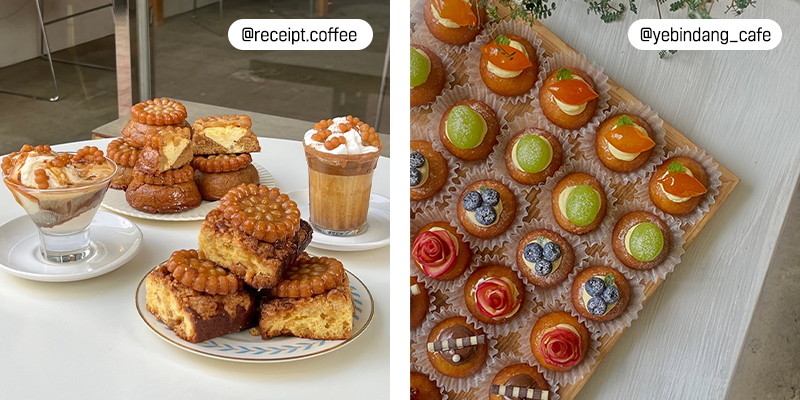
The Colorful Varities of Hangwa
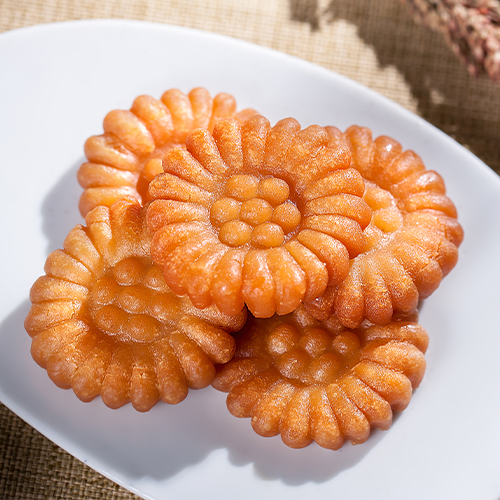
#Yumilgwa
Considered the most luxurious among Korean traditional sweets, yumilgwa is a cookie made by kneading flour with honey or sesame oil, frying it in oil, and soaking it in honey before consumption. One of the representative yumilgwa is called yakgwa, which means medicinal snack, as our ancestors considered honey a remedy and thus named it. Depending on the shape and ingredients, it is categorized into various types, such as moyak (angular and large), dasik (pressed into a mold), and mandugwa (shaped like dumplings).
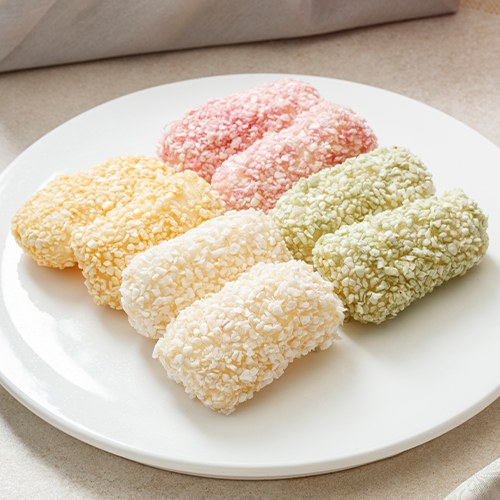
#Yugwa
'Gangjeong' and 'Sanja,' commonly found in markets, belong to the ‘Yugwa’ category and have long been considered top-tier Korean traditional sweets, alongside yakgwa. Thinly ground glutinous rice is shaped into elongated forms, fried in oil, and coated with syrup or various ingredients. When bitten, they are crisp and shatter, melting in the mouth like cotton candy, creating an irresistible charm. Depending on the coating, various types can be made, including konggaru gangjeong, sesame gangjeong, songhwa gangjeong, saeban gangjeong, and maehwa gangjeong.
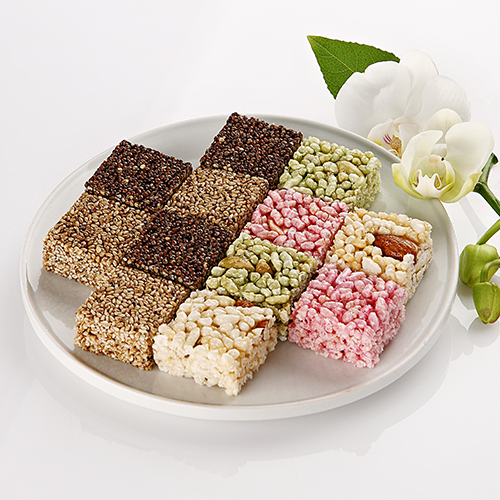
#Yeot Gangjeong
Unlike soft gangjeong, Yeot Gangjeong is a hard candy-like sweet made by mixing roasted nuts or grains with malt syrup or yeot (malt candy). Its delightful crunchy texture and rich, nutty flavor makes it exceptional. Made with precious seeds, it's a nutritious snack rich in protein, fat, and minerals. Especially during cold winters, people used to store them in clay jars, taking out small pieces to enjoy. It is said that they were also given to children as a reward for the ritual of Sebae (New Year's bow).
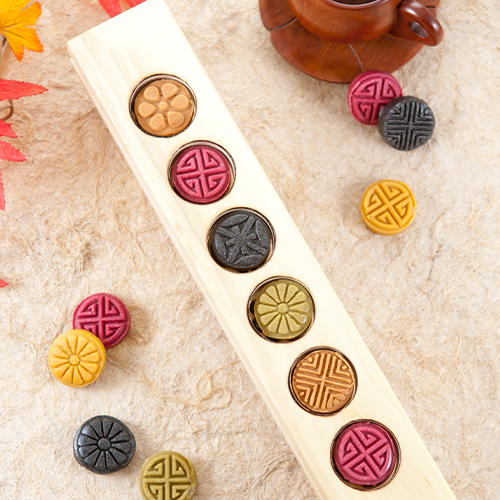
#Dasik
Dasik, a snack that was a staple at national banquets and significant ceremonies, is a cookie adorned with beautiful, vibrant colors. Made by kneading dry flour with honey and pressing it into molds, dasik showcases intricate patterns and artistic elegance, depicting human desires, animals, flowers, and more. For weddings and celebrations, various colored dasik, such as yellow songhwa dasik, blue seunggumcho dasik, pink omija dasik, and black black- sesame dasik, are intricately crafted, adding decorative charm.
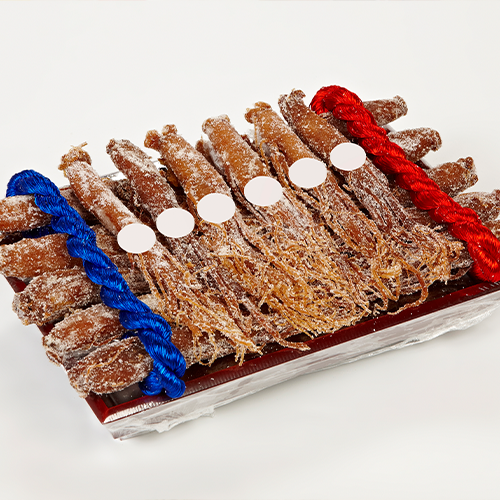
#Jeonggwa
Jeongwa refers to plant roots, stems, or fruits with relatively low moisture content that are lightly blanched and then simmered in honey or malt syrup for an extended period. They are known for their chewy and sweet, slightly sticky textures. Particularly, insam ginseng jeonggwa is put out for special occasions. After removing the ginseng peel, it is cooked with honey for a long time, resulting in a glossy, brown, sweet, and chewy jeonggwa. Additionally, walnut jeonggwa and doraji jeonggwa are popular as ceremonial gifts or holiday.
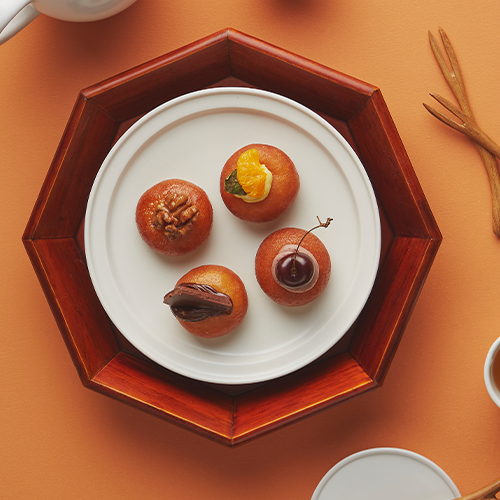
#Jujak
Jujak, with its round and adorable shape, is a traditional food of Gaeseong (southern part of North Korea) enjoyed when the new harvest of rice became available. Resembling small pebbles, it was also called 'Umegi' in the past. It was enjoyed so much that there was a saying, 'No celebration without Umegi.' Made by kneading glutinous rice with makgeolli (rice wine) and deep frying it, then coating it with syrup, it remains soft for about 2-3 days. The sweet syrup and fragrant ginger blend together, creating a delightful burst of sweetness, perfectly complementing a cup of slightly bitter tea.
The Elegance and Subtle Beauty of Korean Desserts
Korean desserts have evolved over a long period, encapsulating the heartfelt moments of special occasions and joyous times. Tteok (rice cake) and hangwa (traditional Korean sweets) have always been shared during moments of happiness, encompassing the wisdom of our ancestors who not only understood the scientific compatibility of ingredients but also ensured the nutritional values in accordance with the seasons.

This historical background, combined with the elegant and subtle flavors, might be the reason why so many people continue to be passionate about Korean desserts today. This season of changing weather is the perfect time to savor hangwa - traditional Korean sweets with a warm cup of tea.
References Encyclopedia of Korean Culture, <Traditional Korean Sweets> by Gil-Ja Jung, Traditional Culture Research Institute Onjium Workshop <Onjium’s Cookbooks: Roots and Wings>, <Gangjeonghouse’s Korean Dessert Recipe Book> by Yong-Taek Hwang.

 한국어
한국어
 English
English






